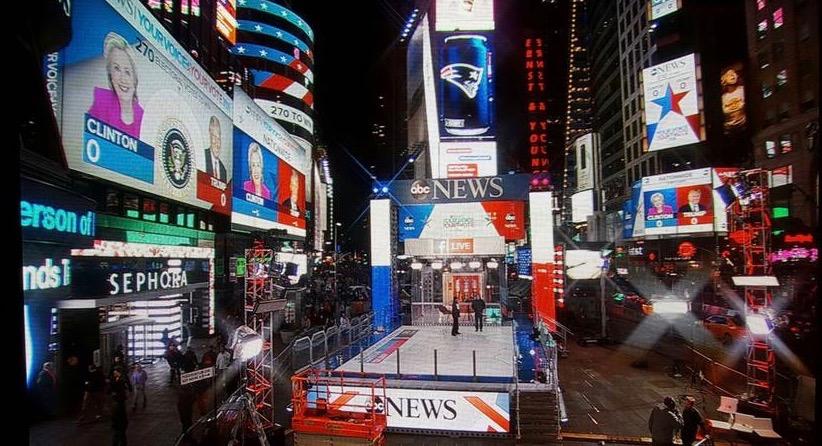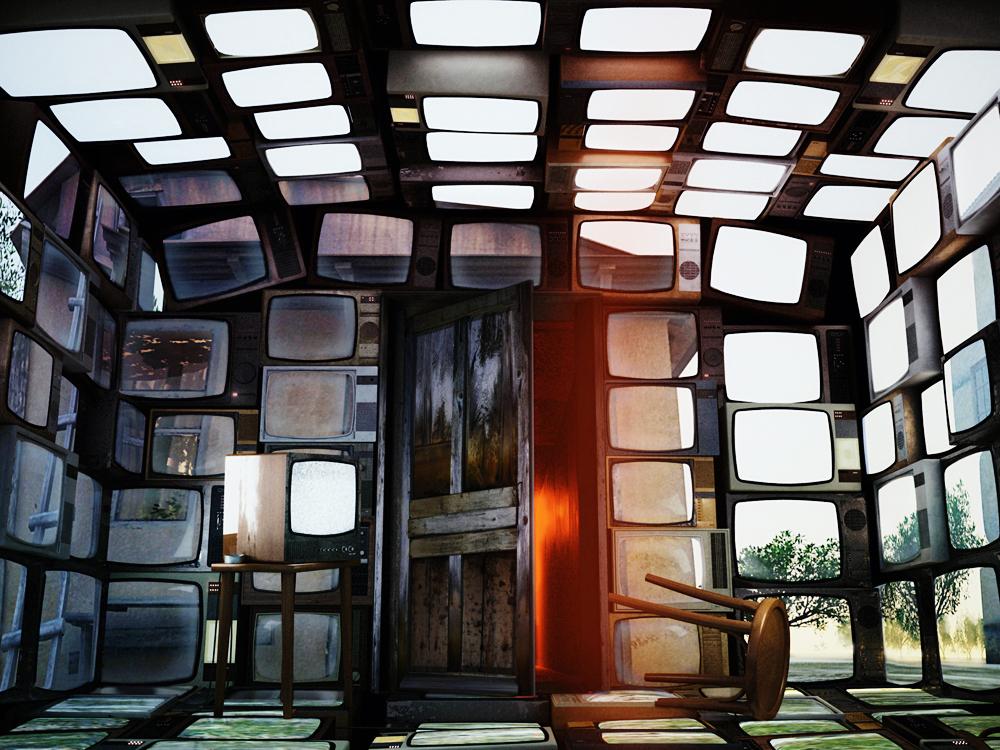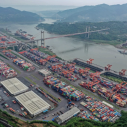Imaginal Politics in the Age of Trumpism
archive


Imaginal Politics in the Age of Trumpism
We often hear people saying that our politicians lack imagination. In the epoch of global governance when politics is reduced to mere administration, there seems to be little space for the free development of imagination. Yet, if we consider the spectacularization of politics that appears on our screens every day, and most recently, the upsurge of heated talk about “fake news” versus real news, we cannot but perceive an excess of imagination. How can we explain the paradox of an eclipse of imagination that goes hand in hand with its hypertrophy? In order to come to terms with such a paradox we need to rethink the link between politics and our capacity to imagine.
If one looks at the meaning of the concept of imagination, it is not difficult to perceive two quite different usages. In our everyday language, we tend to associate imagination with what is not there, with the unreal, as in common expressions such as this is “purely the fruit of your imagination.” However, along with this usage of the term, there is another that goes back to the ancient Greek term phantasia and which is associated with the production of images in the most general sense—that is, images of both what is there and what cannot be there. It is in this second sense of the term that images are so central to our political life.
In order to recover this insight, the concept of the imaginal has recently come to the fore, as suggested by Cynthia Fleury.1 Whereas imagination tends to be conceived as a faculty that individuals possess, and the social imaginary as the social context that, so to speak, possesses us, the imaginal is simply what is made of images and, as such, can be the product of both. Because the concept of the imaginal makes no epistemological assumptions with respect to the faculty that produces images (either the individual, as conceived in the liberal tradition, or the social imaginary, as derived from the communitarian one), it is a much better tool to theorize the politics that goes through the production and reproduction of images. Furthermore, whereas the concepts of imagination and of the imaginary are usually associated with a lack, the concept of the imaginal, as simply what is made of images, makes no assumptions as to the ontological status of images. Consequently, the imaginal is a much more open concept, and therefore is more easily adapted to diverse contexts. The imaginal thus conceived plays a crucial role in all aspects of social life, because images are what enable us to orient ourselves in the world, to disclose both what is already there and what is yet to come.
What is therefore the political role of the imaginal?2 If we understand “politics” to mean whatever pertains to the decisions concerning the fate of a community, it patently depends on the imaginal because it depends on the possibility of making the public exist in the first place. This holds not only for large communities such as modern states, but also for small ones: even in small communities based on face to face relationships, you need to imagine a community in order to make it exist out of a simple collection of individuals. Communities exist because we imagine they exist. In other words, politics depends on the imaginal because it depends on the possibility of imagining commonalities and, thus, on the possibility of freeing oneself of one’s own particularities by imagining what each of us might have in common with others. Even more crucial is the role of the imaginal in thinking of a potentially global community as an alternative to individualism and nationalism.
If we understand “politics” to mean whatever pertains to the decisions concerning the fate of a community, it patently depends on the imaginal because it depends on the possibility of making the public exist in the first place.
Given such an understanding, what then are the contemporary implications of this strict link between politics and the imaginal? Because images mediate our being in the world, they are crucial for all communication, with political communication being no exception. That images overwhelm contemporary politics is no surprise: politics today feeds on our very capacity to create images. If one thinks of what politics used to be just a few centuries ago, a huge change in its very nature quickly becomes evident. Our political experience is now inconceivable outside of the continual flow of images that appear on our myriad screens. Today, images no longer only mediate political activities; they have also become an end in themselves, thereby running the risk of doing politics in our place.

Source: virtz.com
Yet, amidst this profusion of images, we find something more—a sort of hypertrophy of the imagination due to the massive diffusion of media. With its repetition of nationalistic symbols and images, contemporary politics also seems to lack the capacity to question what is given. This apparent paradox is the result of a hypertrophy of the more passive side of imagination, which happened at the expense of its more active side. We are so image-saturated that it has become increasingly difficult to create radically new images. This, in turn, is the consequence of a change in both in the quantity and the quality of the images produced in our global epoch.
In terms of quantity, we cannot but notice a decisive increase in the sheer number of images that enter our life. Indeed, the quantity of images produced by the media has reached such proportion as to effect a qualitative leap: images have become an end in themselves. Many authors, for instance, have noticed the ritual function of elections. By virtue of their mere repetitions, elections reinforce a certain model of society by providing it with visible continuity. However, the quantity of images that accompanies contemporary elections in most Western countries has become such that the spectacle completely prevails over the content. Images are too many, and they seemingly proliferate without any logic of selection. Audiences, instead, provide the filter: only those images that can capture people’s attention are raised out of the stream. Hence, the predominance of spectacle. However, the battles staged on our screens during elections obscure the fact that no real battle is taking place, because the real clash is not among the official candidates (who most often have very similar programs), but instead lies beyond our screens. The real fight is between the political options that are admitted and those that are denied entry into the public arena. The decisive distance is not between candidates and elections, but between those candidates and political platforms that secure a role in the spectacle and those left out.
...images no longer only mediate political activities; they have also become an end in themselves, thereby running the risk of doing politics in our place.
In terms of quality, we find another intrinsic change in the nature of images, a change that is likely to affect the link between politics and the imagination even further. Behind the virtual revolution, there is indeed a deep change in the nature of images: not only have images become commodities, which are therefore subjected to the laws and treatment of all other commodities, but now they are also malleable in a way never before possible. In the epoch of Photoshop, images are both serially reproducible and fundamentally modifiable such that they can be completely falsified. In other words, images lose their connection to a tangible “here” and “now.” Whereas with celluloid photography images were still connected to their original act of creation (a picture of something needed to be taken before being reproduced), with virtuality this tether has been overcome. There is no “here” and “now” of the original creation in a virtual image, and therefore no authenticity to be preserved. Virtual images are not objects that can be created once, but rather are ongoing processes, signaling a technological change that deeply affects the way we relate to images, and also our assumptions about knowledge and reality, since images are what mediate our experience of the world.

Image: artwork by Andrey Bobir
Although this dynamic process has great democratic potential because everybody can intervene in a virtual image, it also opens new and terrifying scenarios because we have no secure criteria to determine the authenticity of such images. Anything goes—even faked information—so long as it captures the audience’s attention. When linked together with the desire to be noticed, we are invited to give up on truth and reality as the ultimate criteria for deciding what matters in politics and everyday life.
It is only in this context of a deep transformation in the phenomenology of the imaginal, that we can come to terms with phenomena such as Trumpism. The latter does not simply result from a manipulation of our capacity to imagine: it feeds on this transformation that made Trumpism possible in the first place, which it consciously seeks to affect in turn.3 In other words, we need to understand why people were ready to exchange “fake news” for “real news” in order to understand why the most professional politician one can imagine has lost the presidential elections to the most unprofessional one in generations, who now sits in the White House.
Anything goes—even faked information—so long as it captures the audience’s attention… we are invited to give up on truth and reality as the ultimate criteria for deciding what matters in politics and everyday life.
This imaginal transformation also explains the paradox from which we started—a political world full of images but deprived of imagination. Because we are saturated by the deluge of images and rendered even more cynical by their increasing spectacularization and virtualization, we have more difficulties creating radically alternative images of our present, and future, political life. It is in this imaginal space that appeals to revivals of nationalist sentiments proliferate. But it is also in this space that we need to operate if we want to create alternative views of our future.
1 The concept has recently been recovered from Islamic Neoplatonic thinkers
imaginal, Paris, PUF.)
2 I have with these issues more extensively in Imaginal Politics: Images beyond
3 http://www.publicseminar.org/2016/11/the-mass-psychology-of-trumpism/



